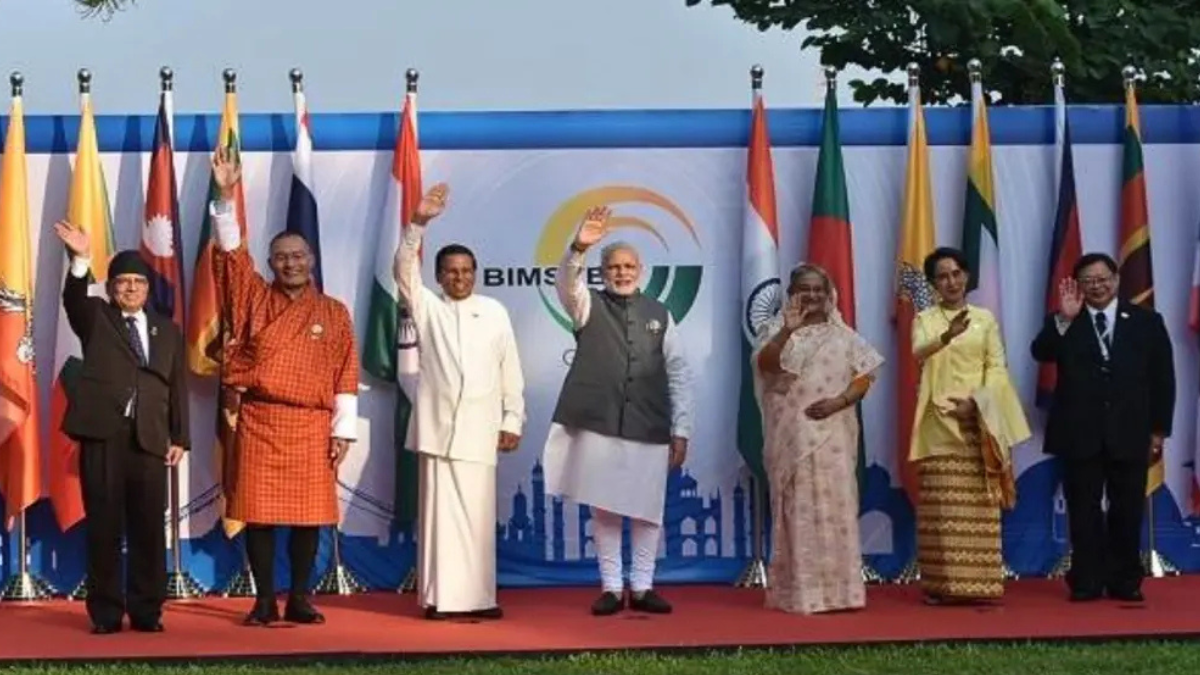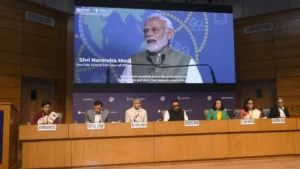The 6th BIMSTEC Summit was held on April 4, 2025, in Bangkok, Thailand. During this summit, leaders from BIMSTEC member nations approved six key outcomes aimed at regional development and integration, with a shared vision to achieve these goals by 2030.
What is BIMSTEC?
BIMSTEC stands for Bay of Bengal Initiative for Multi-Sectoral Technical and Economic Cooperation. It is a regional organization that brings together countries from South Asia and Southeast Asia, aiming to promote cooperation in multiple areas including economic development, security, connectivity, and sustainable growth.
Historical Background
Date of Formation:
June 6, 1997
Original Name:
BIST-EC – Bangladesh, India, Sri Lanka, and Thailand Economic Cooperation
Current Name:
BIMSTEC – Bay of Bengal Initiative for Multi-Sectoral Technical and Economic Cooperation (The name was changed in July 2004 during the first summit in Bangkok.)
Founding Member Countries (1997)
The organization was established with four founding countries:
- Bangladesh
- India
- Sri Lanka
- Thailand
These countries signed the Bangkok Declaration on June 6, 1997.
Key Signatories:
- Abul Hasan Chowdhury (Bangladesh)
- Saleem Iqbal Shervani (India)
- D.P. Wickremasinghe (Sri Lanka)
- Pitak Intrawityanunt (Thailand)
Expansion of Membership
Myanmar
- Joined on December 22, 1997
- With Myanmar’s inclusion, the name was changed to BIMST-EC
Nepal and Bhutan
- Both joined in February 2004
- The final name BIMSTEC was adopted during the first summit in July 2004
Current Member Countries
As of now, BIMSTEC consists of seven member countries:
- Bangladesh
- Bhutan
- India
- Myanmar
- Nepal
- Sri Lanka
- Thailand
These countries are located around the Bay of Bengal and represent a strategic and economically vital region.
Main Objectives of BIMSTEC
The primary objective of BIMSTEC is to promote regional cooperation and accelerate economic and social development through collaboration among its members.
Key Objectives in Detail:
- Economic Growth: Promote faster economic growth among member countries by collaborating in sectors like trade, investment, technology, transport, tourism, energy, and agriculture.
- Social Progress: Work towards improving the living standards of people in the region by ensuring inclusive and sustainable development.
- Technical Cooperation: Encourage collaboration in science and technology to foster innovation and digital advancement.
- Connectivity: Strengthen physical, digital, and people-to-people connectivity to boost regional integration.
- Energy Cooperation: Ensure energy security by promoting cooperation in energy exploration, trade, and development of renewable resources.
- Disaster Management and Climate Change: Enhance collaboration in tackling shared challenges like natural disasters and climate change.
- Security and Counterterrorism: Work jointly on matters of regional security, including counterterrorism and combating transnational crimes.
Significance of BIMSTEC
- Strategic Location: The Bay of Bengal region links South and Southeast Asia, making BIMSTEC a bridge between two dynamic regions.
- Alternative to SAARC: Due to challenges faced by the South Asian Association for Regional Cooperation (SAARC), BIMSTEC has emerged as a more active platform for regional cooperation.
- Focus on Development: Unlike many other regional groups, BIMSTEC emphasizes both economic growth and sustainable development across multiple sectors.



 UNEA Adopts India’s Resolution on Global...
UNEA Adopts India’s Resolution on Global...
 IIT Madras and India AI Mission to Host ...
IIT Madras and India AI Mission to Host ...
 India Begins Countdown to 2nd WHO Global...
India Begins Countdown to 2nd WHO Global...







